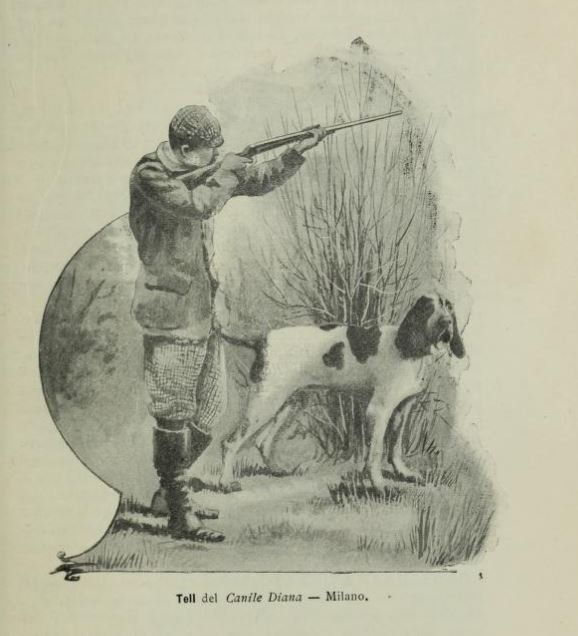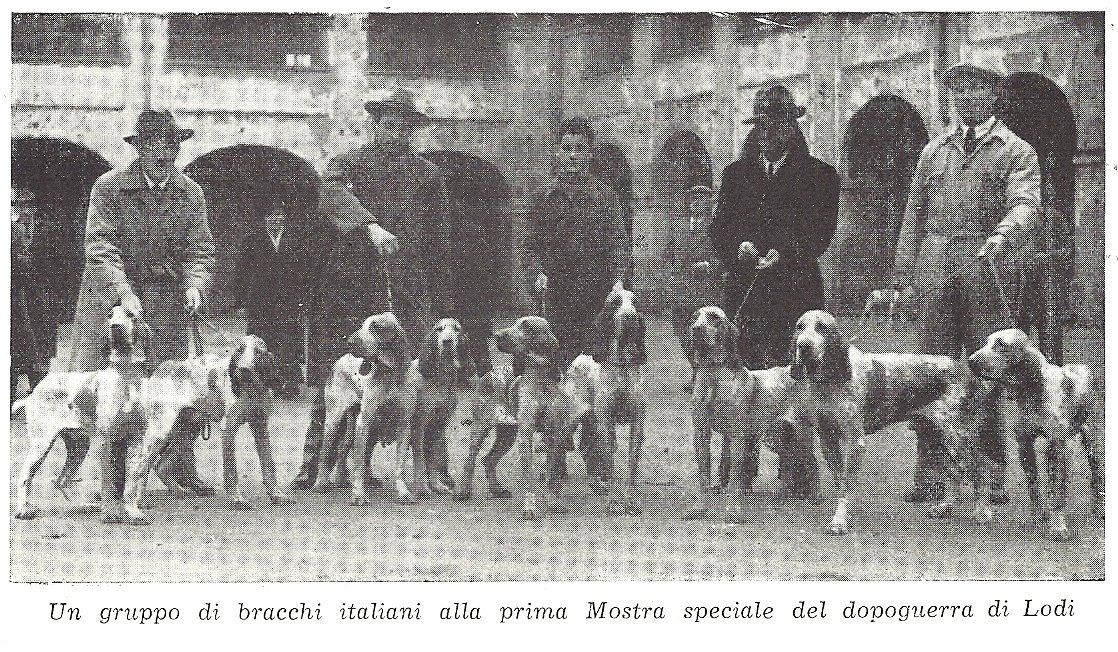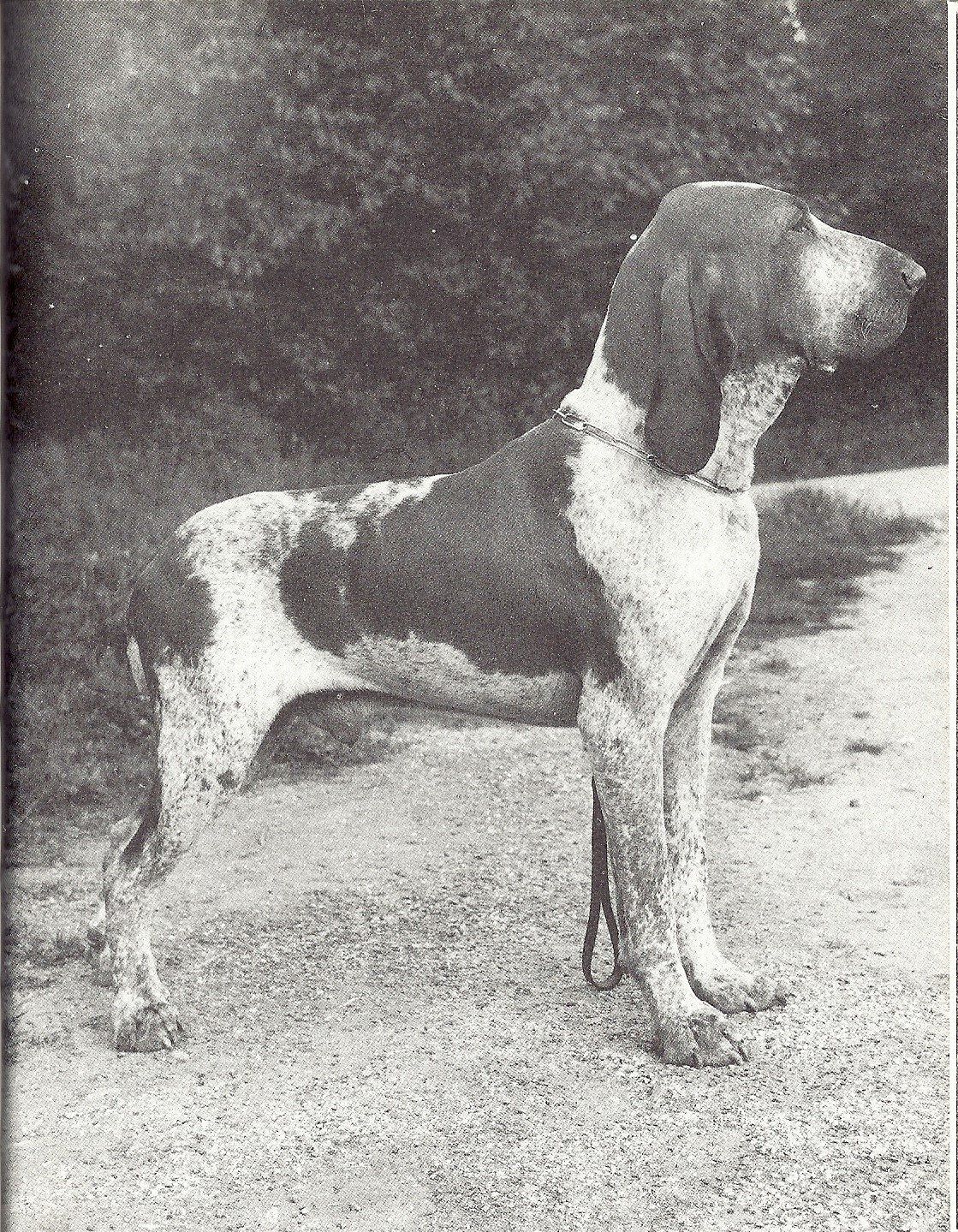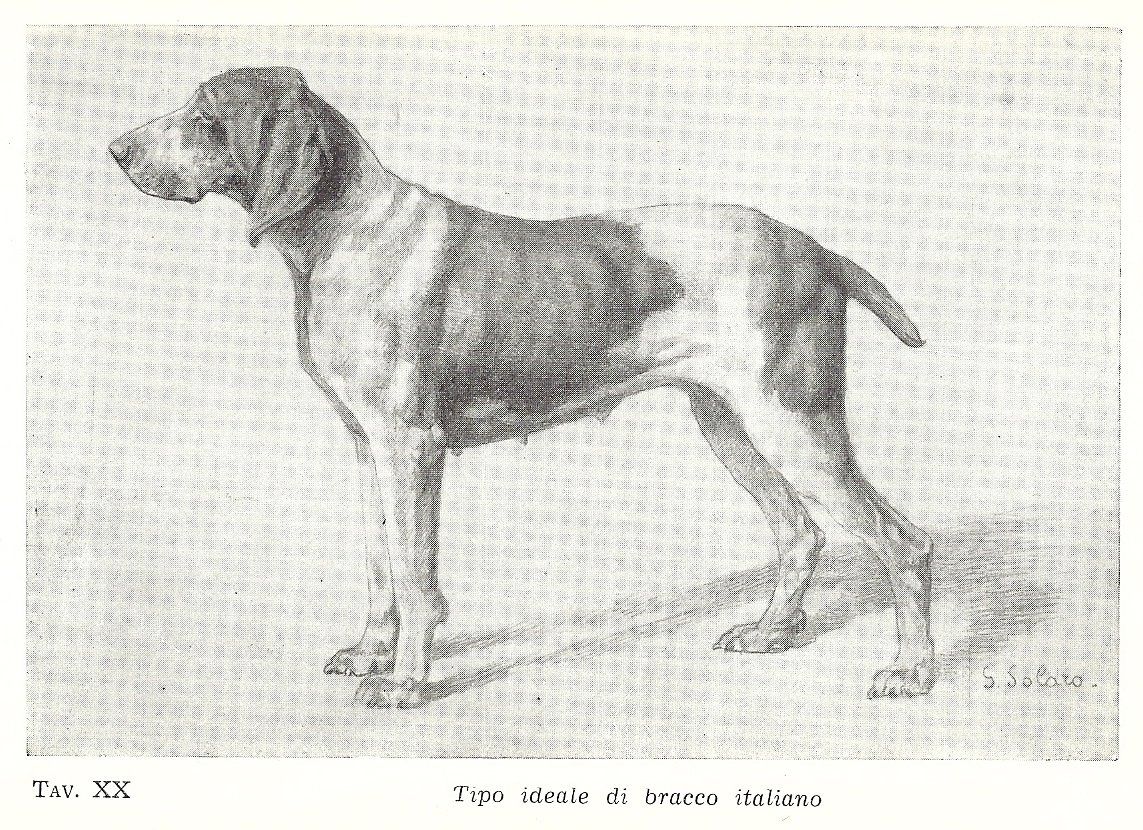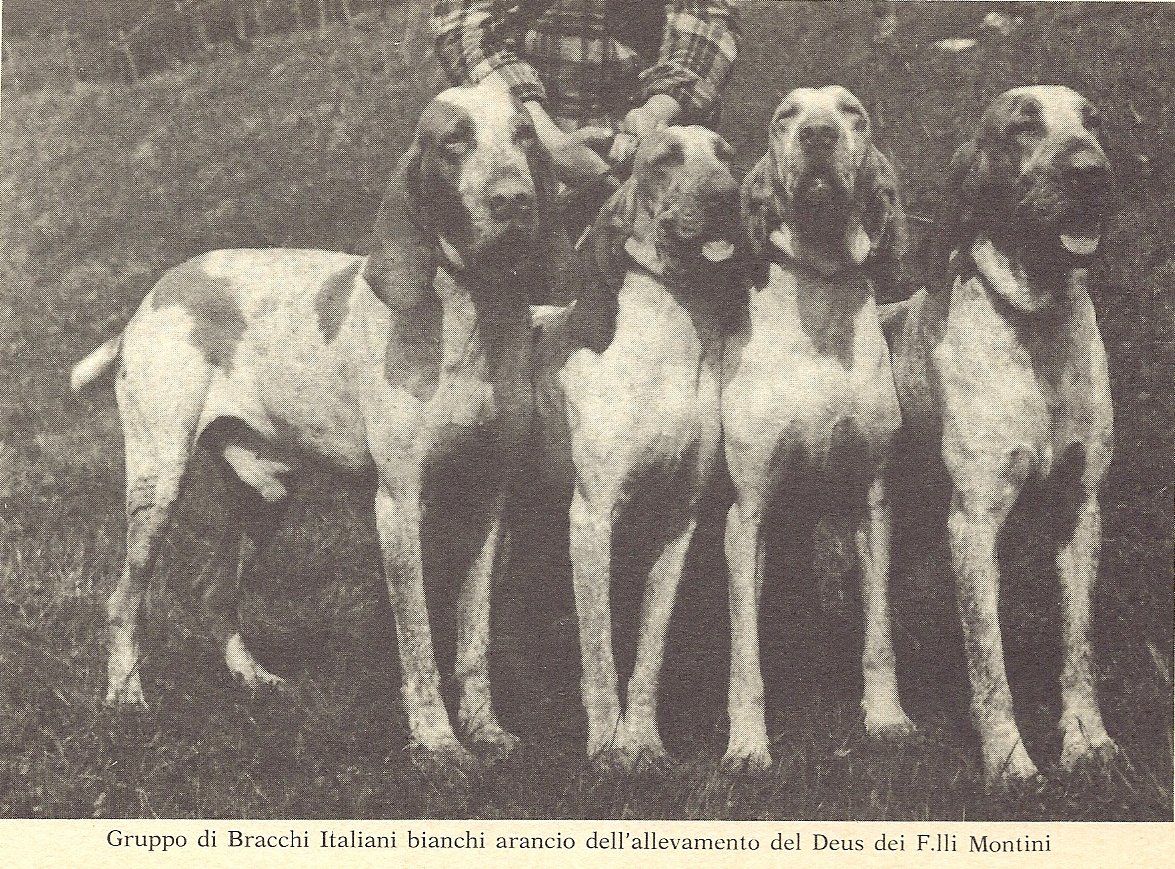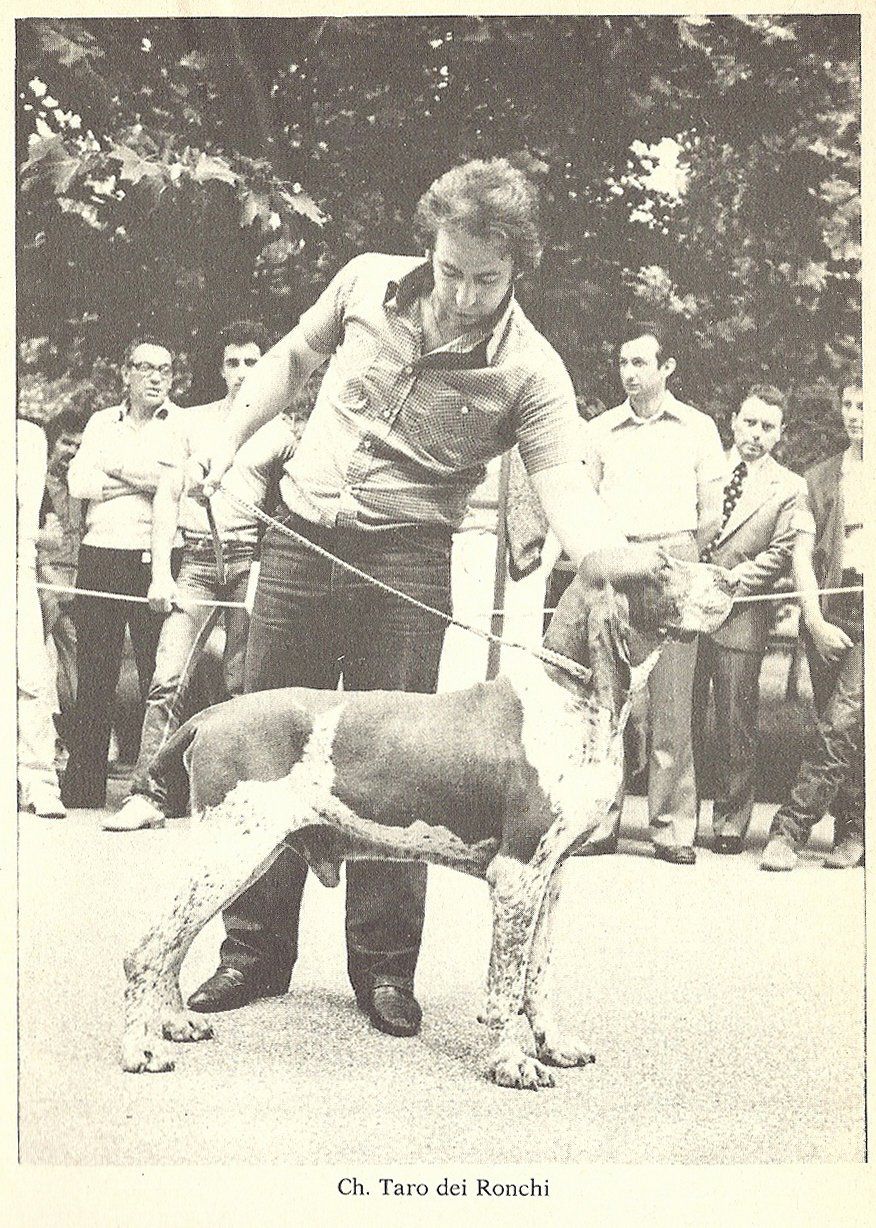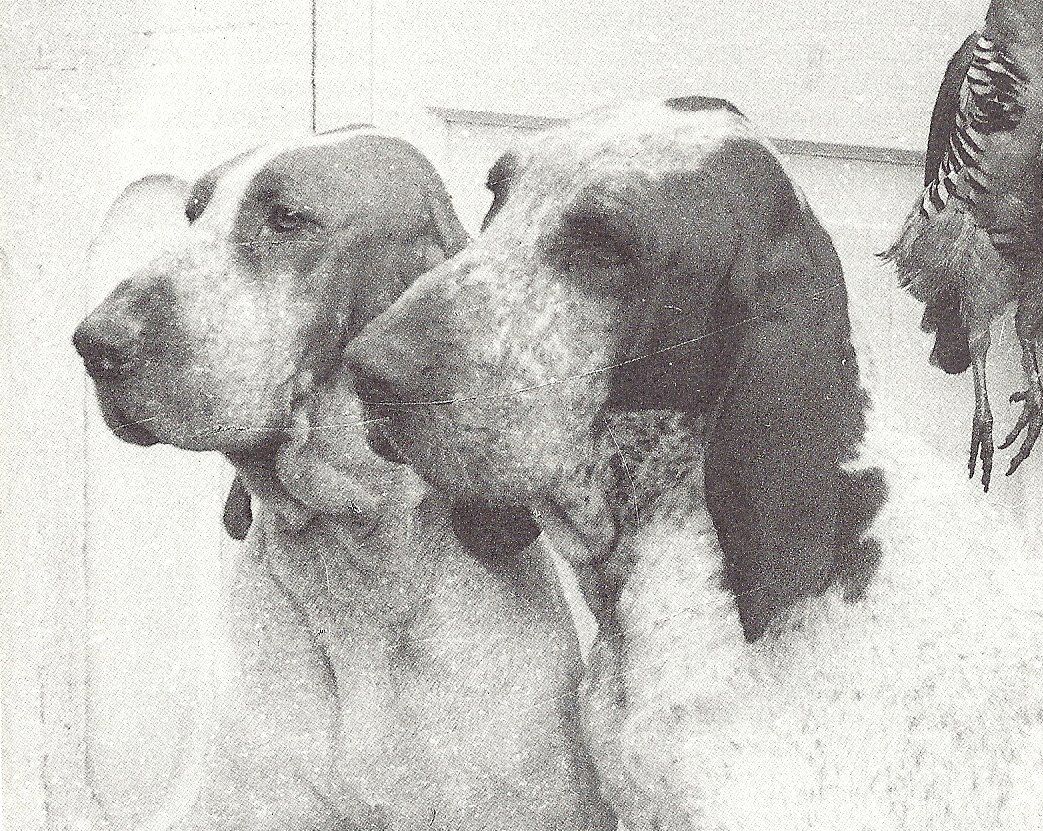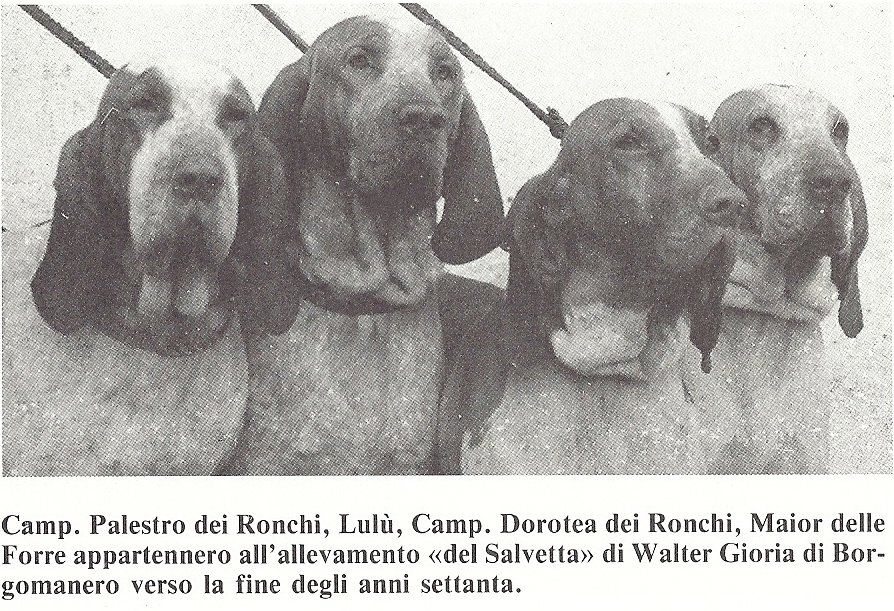Brief History of the breed
A brief history of the Bracco Italiano
The Bracco Italiano is of ancient and noble lineage, he is mentioned in writings of the 4th and 5th centuries. The Bracco has been accepted as a distinct breed in Italy since the Middle Ages.
The origins of the breed are unclear but it is believed to have been developed from the Egyptian hound and the Mollosus or Persian Mastiff. The white and orange is thought to originate from the Piedmont region ‘Piedmontese Pointer’ and was a lighter smaller dog thus enabling it to work more easily this mountainous region. The white and chestnut came from the Lombardy region ‘Lombard Pointer’ and was a heavier taller dog. Over time the two types were combined to create a breed of more uniform size although you will still see today dogs of a heavier and a lighter construction.
Around 1300 Brunetto Latini writes of hunting dog with large pendant ears which remains still when it comes upon a bird and does not advance to flush. It then indicates with a particular tail movement enabling the hunter to drive the bird/s into a net.
So highly prized was the breed they were deemed suitable gifts for royalty. In 1519 it is recorded that Luigi of Breze (Normandy) wrote to request two brown and two white Bracchi of Italy, gifts for the King of France.
The breed became widespread during the renaissance period when hunting feathered game was a highly regarded and exclusive sport of the Italian aristocracy. The Gonzaga and Medici families both having large kennels of Bracchi.
During the 1600, with the development of firearms the breed became more widespread and his style of working more similar to that of today. An article written by Cpt Vita Bonfadini in 1640 gives detail on how to train Bracchi and cures for common ailments.
From the middle of 1600s into the 1700 the breed grew and its abilities and temperament where much appreciated. Cancelleri writes (referring to Marquis Salvatore Spiriti 1741) that the Bracco was the prototype upon which setters and pointers will be based in the next century’s field trials. There was much enthusiasm for the temperament and the breed’s level of obedience. It was said, in this period, that there wasn’t a mansion of hunter’s home that did not have a Bracco.
There was also much rivalry between the hunters as to which of the two races was the most superior, the lighter Piedmont or the heavier Lombardy Bracco. Both claiming that theirs was superior in purity, beauty and of greater merit.
In the 1800’s through historical and political changes the great houses of Italy spent less time hunting and more time in the cities. The wealth which afforded large carefully bred kennels of Bracchi was directed elsewhere. The breed declined as they were left in the hands of farmers and hunters who hand not the means to feed high quality food and bring in superior breeding stock.
Around 1850, in the province of Piacenza, Giovanni Ranza used local Bracchi to create his line ‘Ranza’. He was a farmer who liked to have pedigree cattle and horses, valuing the type and lineage. His Bracchi are said to have been of great beauty and ability. He held his lines close so they were not found widely but his Grandson Luigi Betti was still exhibiting in the early 1900’s.
Ferdinand Delour de Ferrabouc (1838-1913) was one of the 30 people who in 1881 formed a society for the improvement of breeds, this in 1930 became the Italian kennel club ENCI. He is credited with saving the Bracco from near extinction; he was also responsible for the first draft of the breed standard in 1886.
1915 saw the outbreak of the First World War as with many breeds this was a hard time for the Bracco. Feeding the family was difficult due to rationing and even more kennels were lost. The breed was again held by individuals so type suffered and numbers were fewer.
The definitive breed standard was approved by ENCI in February 1949 and nine months later, in November, the Societa Amatori Bracco Italiano, SABI, was founded.
Numbers remained low until around 1957 but stabilised until the mid-60’s when numbers grew.
The breed arrived in the UK in 1989, imported by Liz and Jonathan Shaw (Sentling). They kept the breed close trying to ensure their working ability was appreciated and established. They imported nine dogs and had one litter in quarantine. It was eleven years before another UK kennel produced a litter. The kennels that had the first litters, imported dogs, pioneered the breed in Import Register and produced Bracchi providing foundation stock and winning dogs for others include Braccanza - Jan and Rod Hayward, Gunstrux - Jo Norman, Gunsyn - Lynne Bowley, Homstar - Phil and Lynne March: Indijazz - Emma Towns and Bonario, my own kennel. In the field June Laing’s Ceannacroc Bracchi were also making a mark. Other early kennels include Ardenstorm - John and Hazel Abraham, Curlabull - Mik and Mechelle Jacques and Shaneco - Edna Craske.
The journey to CC status took 25 years, moving from Import Register in 2008,
The main history makers in the breed have to be Liz & Jonathan Shaw (Sentling), they built the bridges that those of us who followed trod.
Sentling Susanna was extremely successful in the show ring and gained the breed’s first Stud Book number through her Field Trial award. Phil & Lynne March (Homstar) imported several dogs. Lord and Lady Campo di Diana from the Netherlands were shown with success and raised the profile of the breed in the ring. When the breed attained full recognition in 2008, at the first Championship show, WELKS, Judge Julia Iles Hebbert found the breeds first BOB in Bonario Aude Sapere, she was also Best Bitch at the first Crufts to schedule the breed. Her litter sister Bonario De Facto at Primo owned by Mick and Cathy Cooper became the first UK bred International show champion. Both are Granddaughters of Sentling Susanna. The first Open Show, Best in Show winner and also the first holder of the Show Certificate of Merit was Kay Harrison’s Shaneco Daniele De Rossi bred by Edna Craske. The first Crufts Best of Breed was Tripoli and Ahrens well known Axel Del Monte Alago from Italy, the first UK bred dog to take BOB was Lynne Bowley’s Gunsyn Pomata in 2014. The first Championship Show Group winner was Bolton Oransade at Braccorion owned by Julie Rawlings. In 2015 Lynne Bowley's Gunsyn Aafia became the first UK Show Champion. The first Ch Sh BIS winner in 2016 was Multi Ch Sh Ch Polcevera's Ercole ShCM owned by Orsolya Nagy-Kovencz and handled by Nicola Maddox. 2023 saw the first FT Ch, Bonario Fagiana owned by Sue and Alan Parr.

